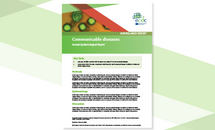Hepatitis B - Annual Epidemiological Report for 2021
For 2021, 30 EU/EEA Member States reported 16 187 cases of hepatitis B virus (HBV) infection. Excluding the three countries that only reported acute cases, the number of cases (15 380) corresponds to a crude rate of 4.7 cases per 100 000 population.
Of all cases, 7% were reported as acute, 43% as chronic, 43% as ‘unknown’ and 7% could not be classified. The highest rates of both acute and chronic infections were observed among 35–44-year-olds. The overall male-to-female ratio was 1.4:1.
The rate of acute cases continued to decline over the last few years, which is in accordance with global trends and most likely reflects the impact of national vaccination programmes. Among acute cases with complete information, heterosexual transmission was most commonly reported (30%), followed by transmission among men who have sex with men (16%) and nosocomial
transmission (12%). Among chronic cases, mother-to-child transmission was the most common route of transmission reported (50%).
Prevention and control programmes, including comprehensive vaccination programmes, need further scaling up if European countries are to achieve the goal of eliminating hepatitis B. Surveillance data are important in monitoring the epidemiological situation, and there is a need to improve their quality.
Download







